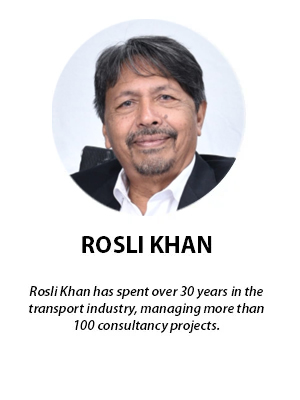
I recently spent Hari Raya in both Singapore and Johor Bahru, which naturally involved traveling across the Causeway and utilising various modes of transport in both locales.
Here are some observations I made during my movements, highlighting the discomfort, inconvenience and costs that pose significant obstacles to mobility in the region.
Convergence of travellers
It is evident that the regulatory framework of both countries compel travellers to converge at the two main processing centres.
That has made for nightmarish experiences for commuters at the customs, immigration and quarantine (CIQ) facilities at Woodlands in Singapore, and JB Sentral in Johor Bahru.
These sentiments were echoed by many fellow travellers I encountered, prompting me to investigate further.
What stands out most prominently is the regulatory preference for directing all cross-border taxis to Larkin Sentral, a decision that significantly impacts passenger convenience and adds unnecessary costs and delays to their journeys.
JB Sentral is 1.5km from the Causeway and within JB city, whereas Larkin Sentral is about 7.5km further north.
Despite the clear demand for direct access to JB Sentral, taxi passengers are compelled to disembark at Larkin Sentral, regardless of where in JB their final destination is.
While car commuters may find long queues fairly tolerable due to the comfort offered by their air-conditioned vehicles, the situation is starkly different for motorcyclists who are forced to endure the sweltering heat and noxious fumes from stationary vehicles.
The prolonged congestion only exacerbates their discomfort and frustration.
Queen Street
For my part, I opted for a taxi from Singapore’s Queen Street, a hub for both individual and shared taxis, as well as buses.
Cross-border buses offer a convenient option, transporting passengers to Woodlands for passport clearance before proceeding to JB Sentral via the Causeway.
Operating round the clock, these buses charge a nominal fare of S$4.80 for a one-way journey to JB Sentral.
Individual taxi rides, on the other hand, come with a hefty price tag of S$70 one way, while shared taxis offer a more economical option at S$15 per passenger.
However, sharing a taxi requires waiting for a full complement of four passengers before departing, unlike individual taxis which offer immediate service.
Despite the convenience of being seated while your passport is processed, taxi passengers are not allowed to disembark at JB Sentral.
Instead, they are only allowed to disembark at Larkin Sentral, even if their final destination is in JB city or even JB Sentral itself.
Why is there a need for such a requirement? Taxi drivers themselves cannot comprehend it. They also detest the additional 7.5km drive, often along congested roads.
By the way, they were asked to move from the Kotaraya Taxi Terminal in JB city to Larkin Sentral in November 2014.
No Grab
Regrettably, Grab cars are restricted to domestic operations within Johor and are not permitted to cross the border into Singapore, limiting transportation options for travellers.
Inquiries about alternative crossings, such as the Second Crossing to Nusa Jaya, yielded disappointing results, with no buses, taxis or Grab cars, servicing this route.
Similarly, the lack of mobility options between Nusa Jaya and Singapore, and Nusa Jaya-JB Sentral, underscores the inadequacies of the current transport infrastructure and planning.
Despite Nusa Jaya’s designation as a key growth centre for Johor over the past two decades, the absence of public transport options raises questions about long-term planning and development initiatives in the region.
While Singapore boasts a comprehensive MRT network, facilitating seamless connectivity across the island, similar accessibility remains elusive in Johor.
Multiple CIQs
Regulatory measures may be necessary to maintain order, but they should not come at the expense of passenger comfort, convenience and affordability.
A centralised CIQ, may have been convenient while it was small and manageable, but no longer appears to serve its purpose.
Perhaps, there is a need to introduce multiple CIQs, sited at different points or spread out across different locations, for the ease of passenger crossing.
Some of these CIQs can be designed to cater only to public transport users, such as buses and taxis.
There is also a definite need for new CIQs at different locations along the coastal waterfront.
Both governments should consider this as a matter of urgency to ease chronic congestion at the present sites.
After all, the Causeway’s capacity has obviously reached its useful limit and has not been expanded despite the rise in demand.
That demand has not only increased over the decades, but now covers a larger area, in line with the physical development both in Singapore and Johor.
It no longer makes economic, social or political sense to compel travellers using different modes of transport to converge from multiple locations and vie with each other and freight traffic for the use of the Causeway.
The Malaysian authorities must also be ready to address the regulatory favouritism towards Larkin Sentral and prioritise the enhancement of mobility solutions to better serve the needs of taxi commuters.
Dare we hope for a better experience for crossings to Singapore and back in the foreseeable future? - FMT
The views expressed are those of the writer and do not necessarily reflect those of MMKtT.


No comments:
Post a Comment
Note: Only a member of this blog may post a comment.